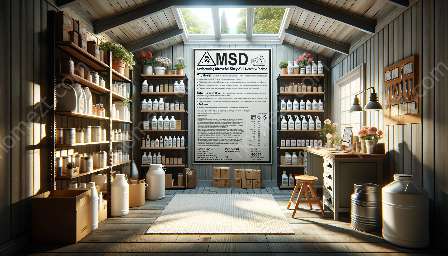Storing hazardous materials requires careful consideration to ensure the safety and security of your home. This comprehensive guide provides essential guidelines for the safe storage of hazardous materials and tips to improve home safety and security.
Understanding Hazardous Materials
Hazardous materials encompass a wide range of substances with the potential to cause harm to individuals, property, and the environment. These materials may include chemicals, flammable liquids, gases, explosives, and more. It's crucial to identify and categorize the hazardous materials present in your home to determine the appropriate storage and handling requirements.
Choosing the Right Storage Space
When storing hazardous materials, it's essential to designate a specific area or storage space dedicated to these substances. Ideally, this space should be well-ventilated, away from living areas, and equipped with appropriate safety features such as fire-resistant cabinets, spill containment measures, and warning signage.
Labeling and Inventory Management
Proper labeling and inventory management are critical aspects of safe hazardous material storage. Each container or storage unit should be clearly labeled with the contents, associated hazards, and handling instructions. Additionally, maintaining an up-to-date inventory of hazardous materials allows for better monitoring and ensures timely replacements or disposal when necessary.
Segregation and Compatibility
When storing different hazardous materials, it's important to consider their compatibility and potential for chemical reactions. Segregate incompatible substances to prevent accidental spills, leaks, or reactions that could lead to hazardous situations. Familiarize yourself with compatibility charts and guidelines provided by regulatory agencies to ensure safe storage practices.
Handling and Personal Protective Equipment (PPE)
Handling hazardous materials requires the use of appropriate personal protective equipment (PPE) such as gloves, goggles, respirators, and protective clothing. Educate yourself and household members on the proper handling procedures and necessary protective gear to minimize the risk of exposure and accidents during storage and handling.
Emergency Preparedness
Developing an emergency response plan specifically tailored to hazardous materials is crucial for ensuring the safety and security of your home. This plan should include procedures for handling spills, leaks, fires, and other emergencies related to hazardous materials. Additionally, ensure easy access to emergency response equipment such as spill kits, fire extinguishers, and emergency contact information.
Regular Inspections and Maintenance
Regular inspections of your hazardous material storage areas are vital to identify potential issues, leaks, or deteriorating storage containers. Establish a maintenance schedule to perform routine checks, test equipment functionality, and ensure compliance with storage regulations and guidelines.
Integration with Home Safety and Security
Safe storage of hazardous materials is an integral part of overall home safety and security. By implementing the aforementioned guidelines, you not only protect against the risks associated with hazardous materials but also contribute to a safer and more secure living environment for you and your family.
Conclusion
Following these guidelines for storing hazardous materials safely can significantly reduce the risks associated with handling and storing these substances at home. By prioritizing safety, implementing proper storage practices, and integrating these measures with home safety and security, you can create a safer living environment for yourself and your loved ones.



